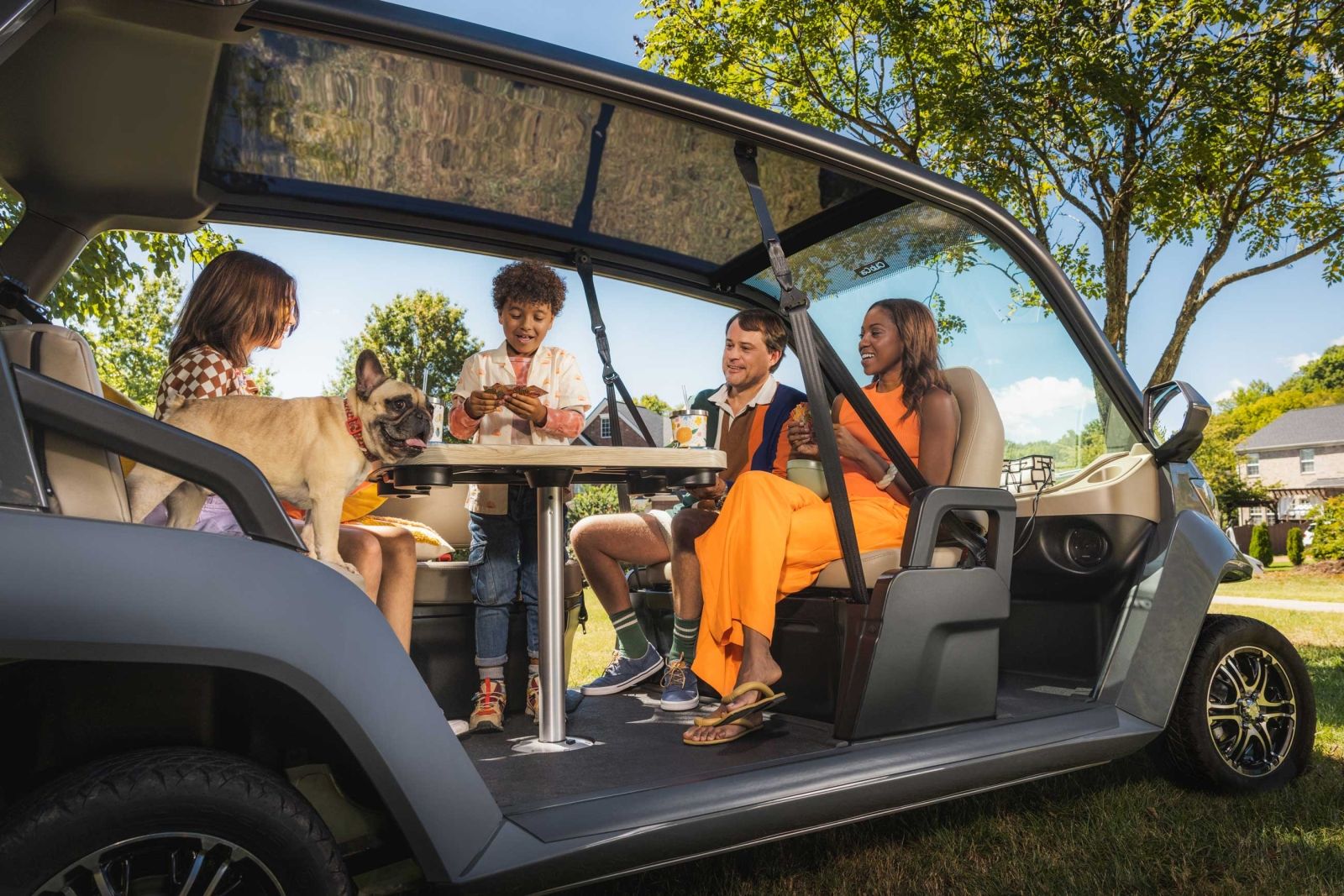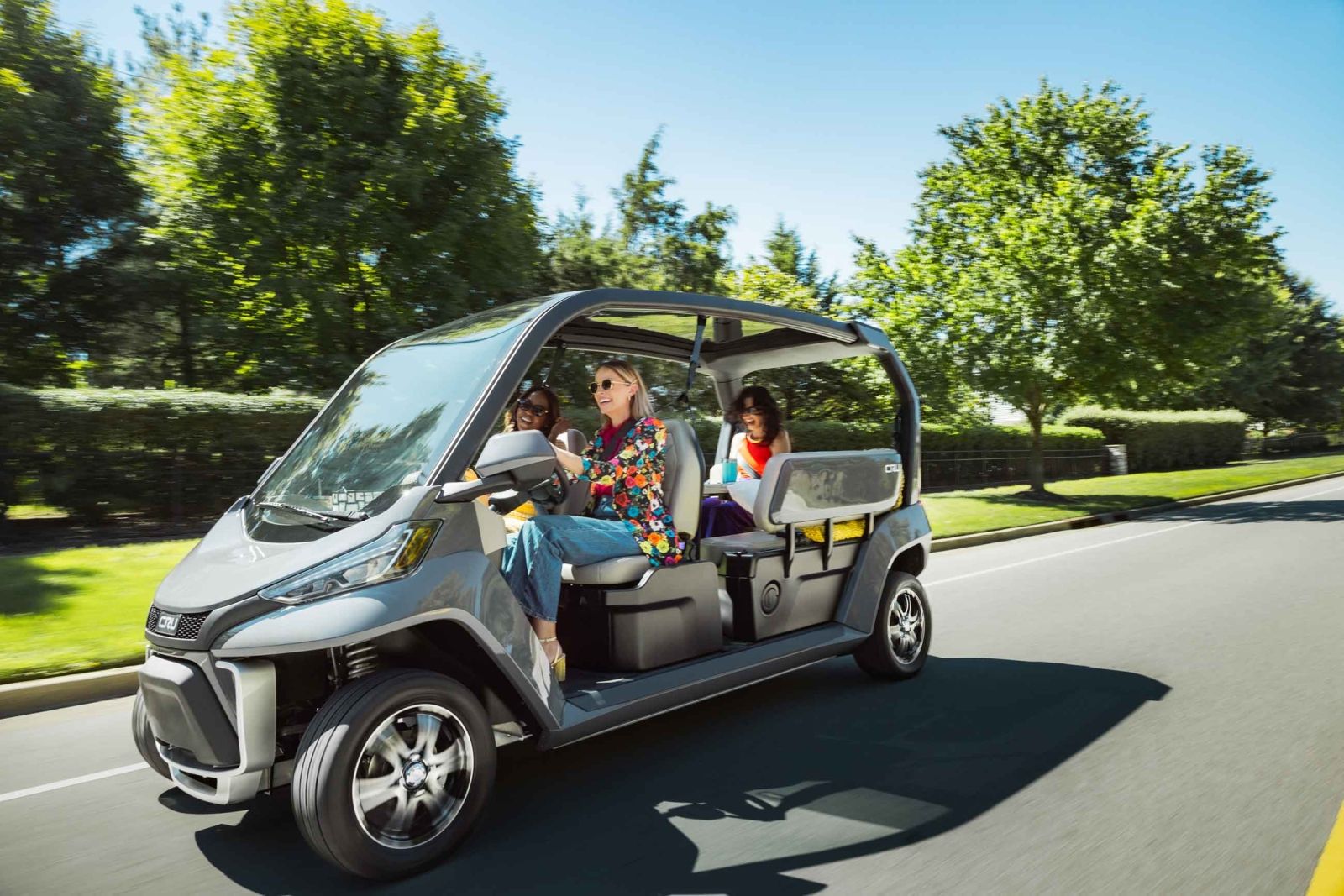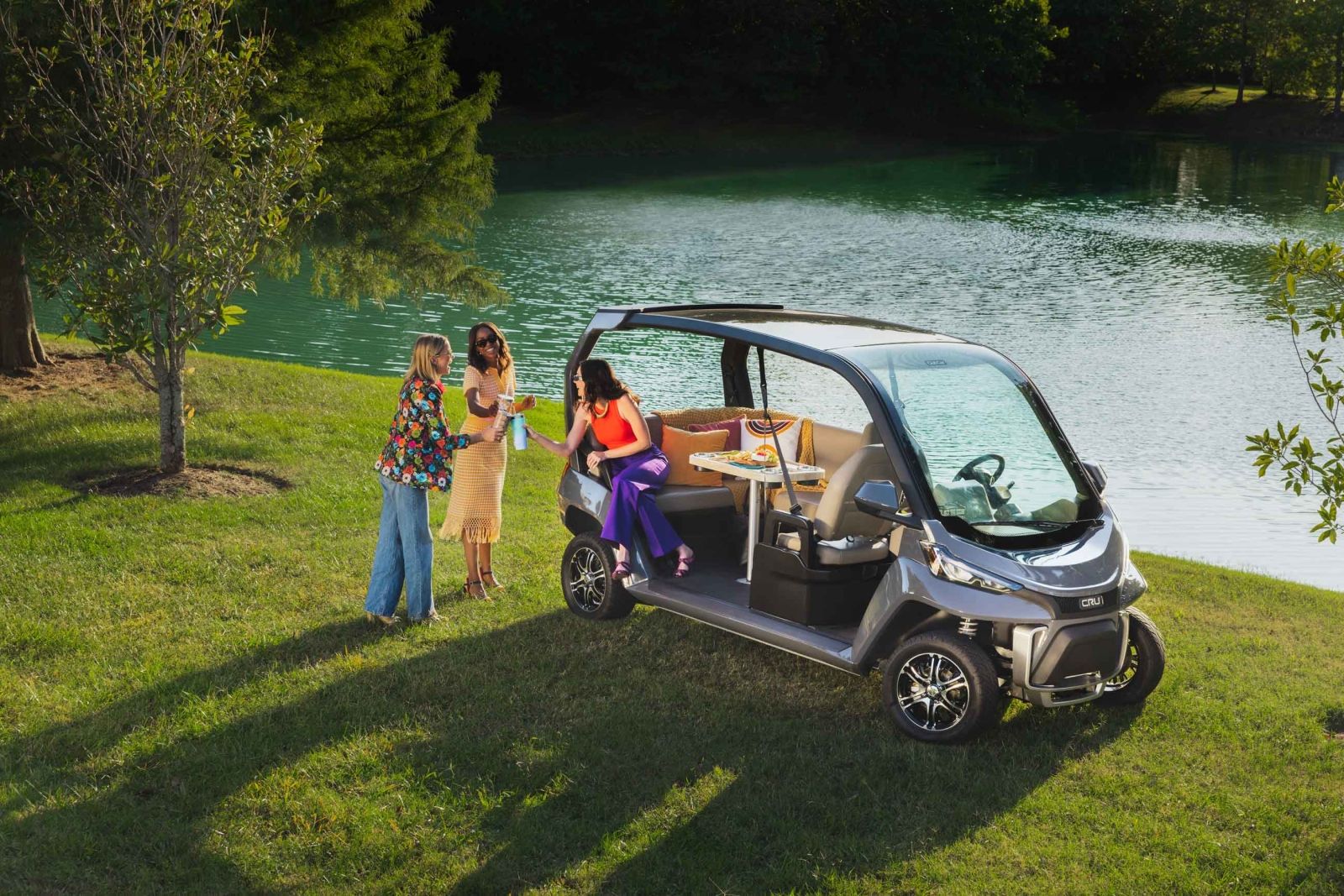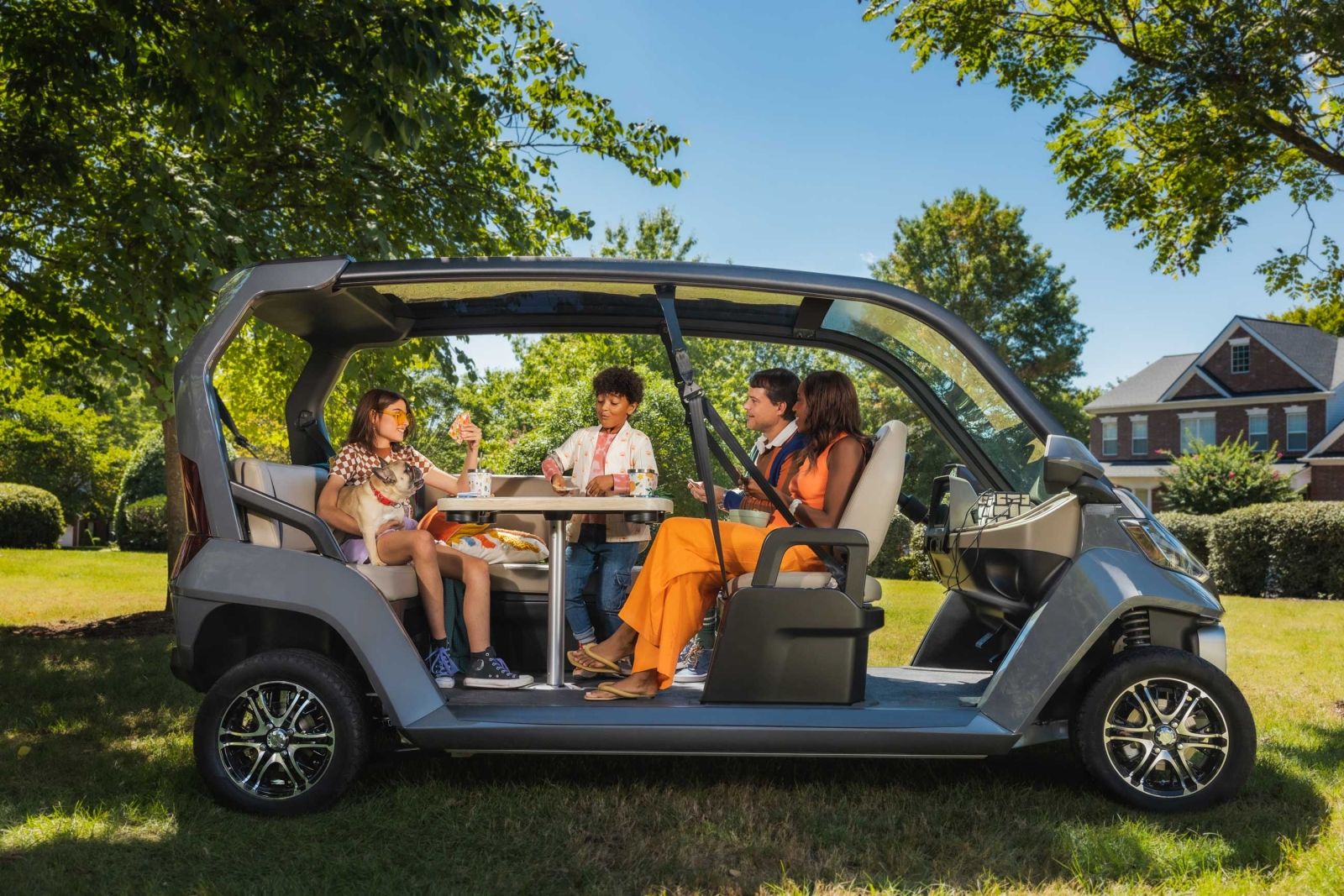CRU
A Social Micromobility Experience

Suburbia moves in mysterious ways.
What do Florida, Arizona, California, South Carolina, Georgia, Virginia, and Arkansas have in common? They are home to some of the top-rated golf cart communities in the US. In other words, just the tip of the iceberg. Suburban-ly speaking, plenty of people today are using golf carts as an around-town, short trip alternative to larger, less fuel-efficient commuter cars.
Club Car, whose golf carts tend be extremely popular among these communities, noticed. Seeing the growing need, they understood that the demand for electric golf-cart-like vehicles, of a predominantly social nature, would only go up.
They were right.

“The idea was to provide a last mile, more sustainable solution for communities that now, or especially in the future, might not allow higher-speed, or gas-powered vehicles to be in that community.”
Mind the mobility gap.
While more and more people spend more and more time away from their workplaces, commuting less, and embracing local experiences, we find ourselves in the face of a mobility gap. And we, found ourselves in the face on a very exciting brief. Starting completely from scratch, we were challenged to conceptualize and bring to life a brand-new type of vehicle; One that would enhance outdoor experiences. In the sense that it doesn’t just take you there, but it becomes part of the actual experience, and in a way, function as a platform that enables and enhances it.
“This was truly a ground up design. We were defining an experience, and designing this vehicle not only for getting from A to B, but as part of the experience, as a hub, as a place to gather, as a place to invite.”

Enter CRU: a social activity vehicle, first of its kind.
CRU is street-legal EV that looks a lot like the love child of a traditional golf cart and a full-blown automobile. You can think of it as an open-air, social space on wheels. A social activity vehicle born to fill the gap within the suburban micromobility ecosystem. Its minimalistic design and simple, unpretentious looks might fool you. But take a closer look and you will see that this new breed of an EV, has its fair share of innovation, talent, and character.
In designing the vehicle’s flexible interior, we took cues from previous work in marine design, specifically, behaviors of the yachting culture. Where many owners use their boats while docked, for socialization in the rear of the vessel.
We sought to replicate that experience on land, all the way down to the indoor-outdoor nature of a yacht. You have the comfort of the inside but you’re actually outside.
Neither fast, nor furious. Rather small, flexible, family-friendly, and luxurious.
While CRU has a lot of automotive elements – including automotive quality fabrics – it was very important to find the right balance, so that it doesn’t become a car-car. That’s why we chose to keep certain golf-cart features, like the foldable windshield, and the overall open-air design. However, while the curb-side of the vehicle is open, CRU will also have an enclosed road-side to reduce noise, create a living room-like sense of intimacy and safety, and make parental life just a little bit easier.
The open side invites you in, it feels more instant somehow, more social, than a regular car. And therefore, it really fits these short-distance trips that you do inside of a smaller community.
CRU’s friendly nature is not reserved just for families though. It extends to its surroundings and pretty much anyone who comes its way; while the open-air design and the low speed make it undeniably inviting and easy to hop on and off, the fact that it’s a sustainably designed, battery-electric vehicle means that you have a) a smaller overall footprint, and b) a quiet space to immerse in nature, whether parked or on the move.

Forward-thinking, backward-facing.
CRU’s socially forward design is able to facilitate a variety of activities that normally would have been handled by a car. But what makes CRU truly unique, is the fact that its design does not only accommodate human interaction, it actually encourages it.
Folding, backward-facing seats allow drivers and front passengers to engage face-to-face with their backseat companions. Promoting a kind of performance, more geared toward social interaction and less toward adrenaline rushes. Additionally, the foldable table enables activities from dining to board games. While the adaptive tailgate can serve as a platform for recreation, including fishing and, you guessed it, tailgating.
This unique set up of the lounge, with the seats around the table, really brings out CRU’s social character. It’s actually what makes it less of a vehicle and more of a comfortable, casual, intimate social space. Much like the kitchen table at home. Only more mobile. And a lot breezier.